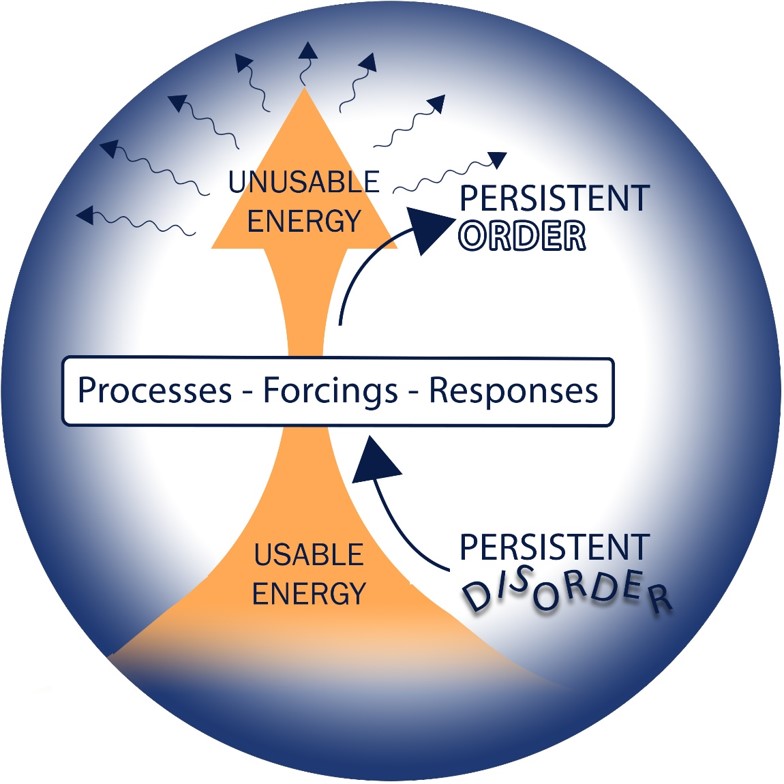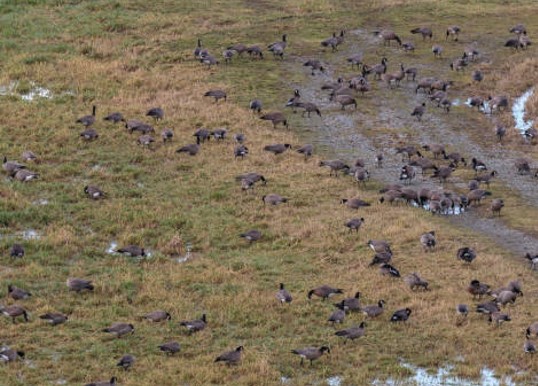
Explore 1.5 Lawful Self-Assembly
Learning Objectives
By the time you have completed the 1.5. Introduction & Exploration Activities, you should be able to:
- Understand the meaning of the following terms/concepts and be able to identify examples of each: system, state of a system, parts of a system, transition between system states, governing processes, push, response. Also, understand the role of energy in driving the emergence of order in natural systems.
- Be able to analyze the development of a natural system in terms of a series of system states separated by transitions.
- Understand that God’s Words & Works contain consistent witnesses regarding the origin of order in nature.
Scientific Terms/Concepts
Terms: system, state of a system, parts of a system, transition between system states, governing processes, push, response.
Define and give an example of each term:
Term:
System
Definition:
Example:
Term:
State of a System
Definition:
Example:
Term:
Parts of a System
Definition:
Example:
Term:
Transition Between System States
Definition:
Example:
Term:
Governing Processes
Definition:
Example:
Term:
Push
Definition:
Example:
Term:
Response
Definition:
Example:
Energy plays an important role in driving the emergence of order in natural systems. For example, people need to eat food and breathe oxygen to produce energy. The earth needs the sun (solar energy) to produce heat and for its systems to work so it is habitable.
The diagram below illustrates lawful self-assembly. Energy helps a disordered state to become ordered. As energy flows through a system, it drives interactions between natural processes, pushes, and responses.


Natural Systems
We will be analyzing complex natural systems based on what you learned in your previous reading. If you need help, please refer back to your reading material.
Below, you'll be presented with the initial and final states (separated by transitions, of course) of these five systems:
- Canada Geese Feeding & Flying
- The End of A Basketball Game
- The 'Flipping' of a Galton Board
- Convecting Oil
- The Formation of an Ice Crystal
For each situation, you will:
- Describe the system by identifying:
- The boundary that separates the system from the rest of the Universe
- The elements—the parts of the system that are either disordered or ordered
- The source(s) of energy that flows through the system
- Describe the initial state by identifying:
- Whether the stated is ordered or disordered
- The governing process(es)
- Any pushes or responses
- Describe the transition by identifying:
- What caused the transition to begin (that is, what caused the initial state to end)
- What caused the transition to end (that is, what caused the final state to begin)
Sometimes, transitions between states involve just one event; that is, the transition begins and ends with the same event. Don't get hung up on the fact that we're asking for a separate beginning and ending—just put the same answer in both boxes or indicate that the first box contains the answer for both. The important part is understanding what is happening in the system, not the boxes we have you filling out. The boxes are there to provide you with 'training wheels' as you learn to 'ride this bike'. Don't worry too much about the training wheels; just use them to learn to ride the bike.
- Describe the final state by identifying:
- Whether the stated is ordered or disordered
- The governing process(es)
- Any pushes or responses
As mentioned, we provide boxes below in which to enter your answers. If you'd prefer to record your answers on paper, use this this worksheet. If you choose the worksheet, make sure to check your answers against those we provide. As you've no doubt figured out by now, entering even a single letter in each box will give you access to the answers we provide. Of course, your mind learns things much more deeply if it commits to an answer before learning a right answer, even if the initial attempt is completely off-target. We invite you not to shortchange yourself by taking the shortcut. In case our invitation to deeper learning is not enough, there's this: you'll need to analyze a system in this way on the upcoming test (without any help from us).
Those just learning about these concepts often find it remarkable that systems as different as flocks of Canada geese and symphony concerts share so much in common and can be analyzed using the same set of tools. The ideas we'll use to analyze these systems represent a simplified version of the ideas used by professionals in physics, information technology, artificial intelligence, genetics, sociology, evolutionary biology, game theory, .... Simplified though it be, the 'template of thought' we're sharing with you is very powerful and can improve your performance in important areas of your life such as your employment, hobbies, or service to others.
For most, thinking about nature in the way we're encouraging is a little tricky at first... but those who develop the ability recognize that these ideas apply in situations all around you, every day. We hope you choose to develop this skill (template of thought) and take it with you throughout the rest of your life, and beyond! Enjoy!
System 1 (of 5). A Flock of Canada Geese
We introduced this system earlier. The photo below illustrates the initial state and this video illustrates the final state. Using observations from this image, the video, and what you know about bird behavior, describe the system and analyze the initial and final states.

System Boundary
Elements
Source of Energy
Initial state
Governing Process(es)
Push(es)
Response(s)
Transition begins with
Transition ends with
Final state
Governing Process(es)
Push(es)
Response(s)
System 2 (of 5). The End of A Basketball Game
Imagine that you’re at a basketball game. The opponents are leading by 12 with less than a minute remaining in the competition. Then, one of your players 'takes over the game' and—because of that performance, good defense, and errors by the opponent—your team unexpectedly wins, by one point! At the conclusion of the game, winning players & fans celebrate the victory and losing players & fans mourn the loss. Imagine that many of the celebrating fans rush the court. A situation such as this is recorded in the first 1 min 40 sec of this video. (The video continues, but this activity is based only on the first game you'll see.) As you watch the video and enjoy the remarkable performance, pay close attention to change of state that coincides with the end of the game. Consider the system boundary to be the 'out of bounds' line that defines the edge of the basketball court and the end of the game as a transition between system states: the ordered state before the end of the game and the disordered state after the game.
System Boundary
Elements
Source of Energy
Initial state
Governing Process(es)
Push(es)
Response(s)
Transition begins with
Transition ends with
Final state
Governing Process(es)
Push(es)
Response(s)
System 3 (of 5). A Galton Board
Galton Boards, named after their inventor, consist of a small receptacle containing small steel spheres (like BBs), a triangular area with regularly spaced pegs, and a series of vertical bins that can hold BBs. Watch this video of a Galton board. Consider the BBs in the small receptacle as the initial state, the BBs falling through the triangular peg matrix as the transition, and the BBs in the vertical bins as the final state. You'll probably want to watch the video several times before answering the questions: the first time to familiarize yourself with the parts of a Galton Board and twice to notice what's happening in each stage (initial state, transition, final state).
System Boundary
Elements
Source of Energy
Initial state
Governing Process(es)
Push(es)
Response(s)
Transition begins with
Transition ends with
Final state
Notice the pattern formed by the BBs in the vertical bins.
Governing Process(es)
Push(es)
Response(s)
System 4 (of 5). Convecting Oil
Watch this video of convecting oil, and then read our description below. This is a fun system: it really seems that the pattern emerges 'out of nowhere' (of course, you know by now, what the source of the order is: lawful interactions cause the pattern to self-assemble).
Convection occurs in relatively weak materials and is caused by density differences. In this case, the material is oil (in a glass dish) and the density differences are created by placing a hot plate under the oil. The hot plate heats the oil at the bottom of the glass dish, which lowers the density of that oil. Then, like a hot air balloon, that low-density oil rises to the surface. At the surface, loss of heat increases the density of oil, causing it to sink to the bottom of the glass dish. Make sense? Consider the oil without convection the initial state, the oil with well-developed convection cells as the final state, and the initiation of convection as the beginning of the transition.
System Boundary
Elements
Source of Energy
Initial state
Governing Process(es)
Push(es)
Response(s)
Transition begins with
Transition ends with
Final state
Governing Process(es)
Push(es)
Response(s)
System 5 (of 5). Forming an Ice Crystal
Most of you have observed recently-formed ice crystals on many occasions. For example, you've seen ice on the surface of an object inside a freezer or, after a cold night, you've seen ice crystals on a window of a house or car, on a plant, or on the surface of a small pool of water. Ice crystals are highly ordered and the gases or liquids from which they form are not.
Watch this video of an ice crystal growing from cooling water vapor in a glass chamber. Consider the water vapor as the initial state, the formation of ice from gas as the transition, and the 'finished' ice crystal as the final state.
System Boundary
Elements
Source of Energy
Initial state
Governing Process(es)
Push(es)
Response(s)
Transition begins with
Transition ends with
Final state
Governing Process(es)
Push(es)
Response(s)
A Brief Note about Order & Disorder in Natural Systems
Our hope for you is that you're beginning to see how lawful self-assembly produces order in natural systems. Don't get too caught up in understanding the science behind each of our examples; that is, don't worry if you don't have a deep understanding of natural processes such as convection or crystallization. We selected examples that would be instructive and, of course, all such examples involve natural processes. Focus on what's important: learning how to apply a powerful 'template of thought' in thinking about systems in nature.
Origin of Order and the Creation
Below we explore whether or not lawful self-assembly plays an important role in The Ongoing Creation. Before exploring that topic, we invite you to watch this video (13 minutes) about scriptural accounts of The Creation.
